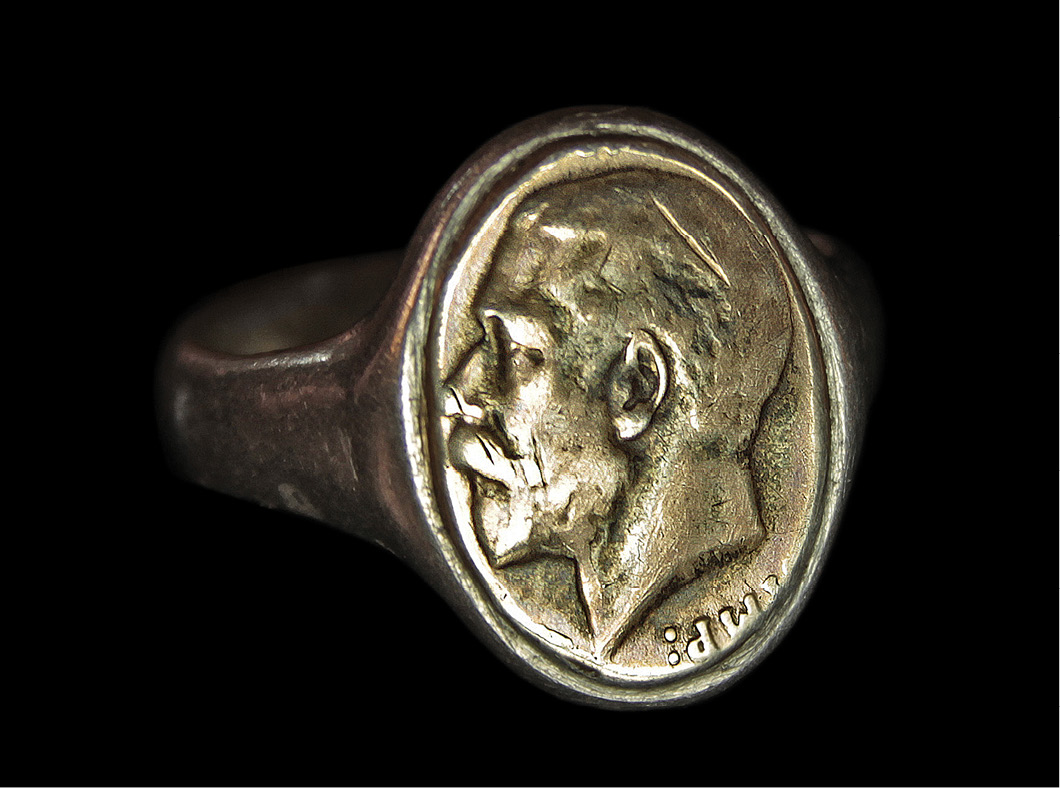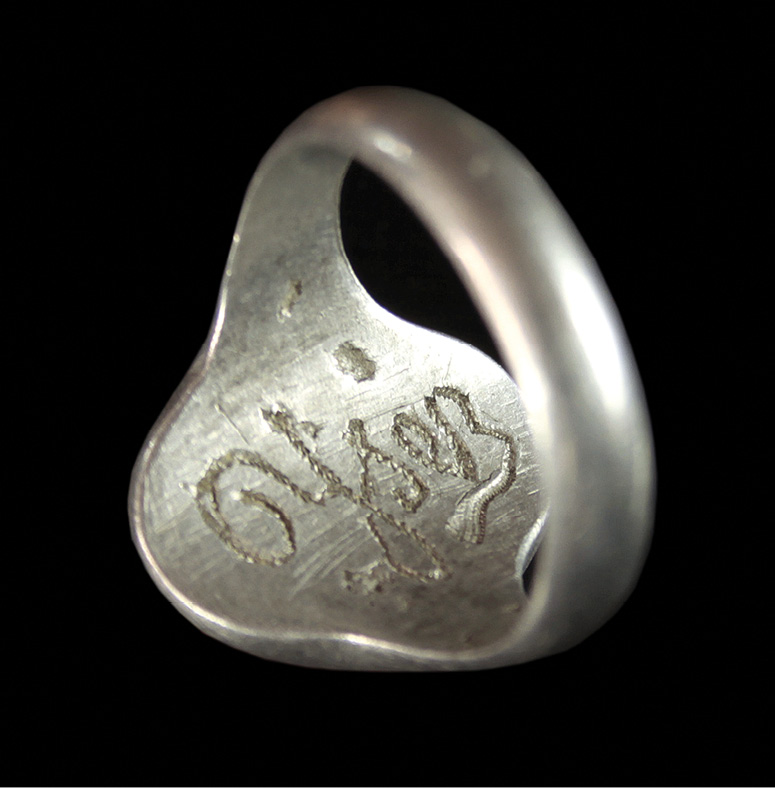44
Trench art ring

THE MANUFACTURE OF “trench art” was fashionable both during and after the war. Trench art represents the folk art of war, reusing as it does the bullets, shell cases, copper drive bands, fragments of aircraft, pieces of wood, and other detritus of war in order to manufacture objects as souvenirs.
The production of such unique objects was dependent upon the skill of the artisan, the availability of munitions and their waste products—shell brass, copper drive bands, and even aluminum from fuse tops and aircraft—and the time and opportunity of the soldier to make something from it. Trench art was sometimes made by soldiers on the front line, and some rare images remain as testimony to the fact that such work was carried out, mostly by shaping and filing simple metal scraps. But more commonly “trench art” was manufactured in rear areas, where there was more access to tools and equipment. Typical soldier items include decorated shell cases, letter openers, matchbox folds, lighters, tanks, and field caps. Many pieces available today were actually made by enterprising civilians and garrison (and ancillary) troops in the battle zone, both during and after the war—especially as there was a lucrative tourism market developing postwar.
The ring illustrated is a small aluminum piece, delicate, and inscribed with the simple word “Yser.” Symbolically important for the Belgians, the Yser/Ijser front from Nieuport to Dixmude had been held since the opening of the floodgates at Nieuport had helped stem the tide of the German advance. With the Germans holding 95 percent of Belgian territory, the 35km stretch of line along the Yser/Ijser River assumed mythological importance, and the Belgians held this line through to the final advance in August 1918. As early as 1915, French and British popular war magazines (L’Illustration and The War Budget) were describing the work of the Belgian soldiers in manufacturing such rings from aluminum fuse caps while holding the line along the Yser. In fact, the manufacture of such rings was common on both sides of the line, and the malleable metal and small size of the object permitted such work in the confined spaces of a front-line trench. Our artisan has gone one stage further: fitted into the ring is the head of the British king, filed from a copper coin; perhaps a souvenir from an Allied trench visit?
With rings like these, and other trinkets, soldiers found opportunities to pledge their love to wives, sweethearts, and family. The fact that this was made by a Belgian soldier, his loved one either a refugee in a foreign country or living under the yoke of occupation, makes this all the more poignant. Who made it, and how long he had before he saw his loved ones again, is difficult to perceive. But it stands as a testimony to the important watch kept by the Belgians in securing the flanks of their Allies on the Western Front.
